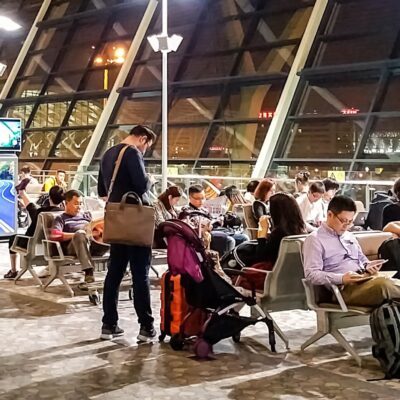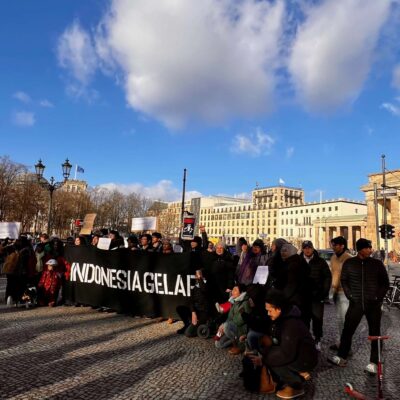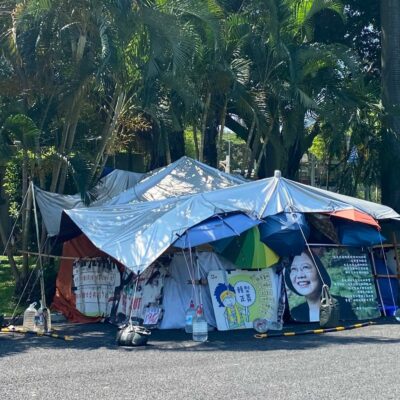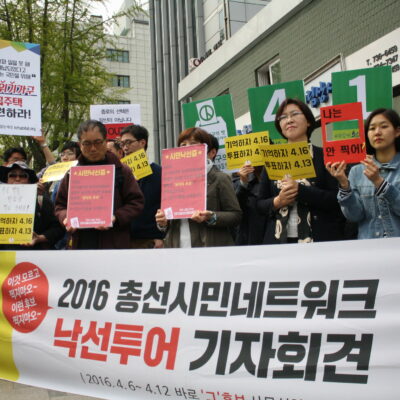The shock assassination of Japan’s former Prime Minister Shinzo Abe in July has prompted fresh consideration of his legacy, particularly in the area of foreign and security policy. International commentators have tended to praise his reforms of Japan’s security policy, many without acknowledging the domestic controversies these stirred up. Notably, his administration’s contentious 2015 Peace and Security Legislation upended long-standing norms of Japan’s constitutional pacifism and led to generationally unprecedented demonstrations on the streets of Tokyo. For many inside and outside Japan, the 2015 Legislation faded as an issue once it passed the Diet (Japanese parliament).
While the struggle in the streets and Diet has come to an end, a Japan-wide network of lawyers and plaintiffs acting under the banner of the Unconstitutional Security Legislation Litigation Association (anpo hōsei iken soshō no kai) (the ‘USLLA’) is continuing the fight in the courts. The USLLA’s challenge to the Peace and Security Legislation is based on its claim that the 2015 Legislation violates the pacifism embedded in the Japanese Constitution. The claim is being made via a series of class actions filed in courts all around Japan.
Constitutional pacifism and the Peace Clause
Article 9 of Japan’s Constitution is known as the ‘Peace Clause’ and, along with the Preamble, establishes pacifism as one of the three foundation principles of the post-WWII Japanese state. Article 9 famously renounces war as an instrument of the Japanese state and, prohibits the maintenance of ‘war potential.’ Much of the Japanese Constitution was authored by the US Occupation authorities and the origin of Article 9 remains controversial. The controversy centres on whether it was conceived of by General Douglas A. MacArthur who led the US occupying forces or whether it was the idea of Japan’s then Prime Minister Kijūrō Shidehara.
The notion that Article 9 is a foreign idea imposed upon an unwilling Tokyo and prevents Japan from being a ‘normal’ nation fuels much of the rhetoric of those seeking formal constitutional change. However, the Japanese people have consistently supported Article 9 and opinion polls indicate no popular groundswell for its amendment. Furthermore, Article 96 of the Japanese Constitution establishes a high barrier for formal constitutional amendment that requires the support of two thirds of the members of each house of parliament and then a majority at a national referendum. In fact, a law setting out the procedures for a referendum was not even passed until Prime Minister Abe’s first short-lived administration in 2007. As a result of these obstacles, debates about the constitutional limits on Japanese military activity have largely turned on the interpretation of Article 9 and the nature of constitutional pacifism.
Interpretation of Article 9
On their face, the words of Article 9 in English appear to impose an absolute pacifism. That is, Japan is prohibited from maintaining military forces of any kind or from entering into military alliances. Instead, an unarmed Japan is to rely on the UN security system and the goodwill of the international community for its security. However, the words of Article 9 in the authoritative Japanese, contain some ambiguity. In particular, when considering the constitution bill, the Diet made changes to paragraph 2 to link its prohibition on maintaining war potential to fulfilling the purposes of paragraph 1, the ‘Ashida amendment,’ This has allowed the Japanese government to maintain the position that Article 9 permits Tokyo to exercise the right of individual self-defence available under international law and, therefore, may make the minimum necessary preparations to exercise that right. In effect, Article 9 establishes a ‘qualified’ pacifism. This is why the Japanese ‘Self-Defense Force’ (Jieitai) (SDF) is styled as a self-defence force rather than a conventional military. The official interpretation is consistently repeated in government publications such as the Ministry of Defense’s annual Defense White Papers and statements by government ministers and senior officials.
For many years, the primary political conflict over Article 9’s interpretation was over this issue of ‘absolute’ vs ‘qualified’ pacifism. The conservative Liberal Democratic Party which has been in government for almost all of the post-WWII era maintained the qualified pacifist interpretation, but was opposed by parties on the political left which include the Socialist and Communist parties. On a number of occasions, peace activists attempted to challenge the government’s interpretation in the courts, hoping that they would rule in favour of absolute pacifism and declare measures such as the SDF or the 1960 US-Japan Mutual Security Treaty unconstitutional.
The role of the Japanese courts
Article 81 of the Constitution invests the Japanese Supreme Court (JSC) with the final power to determine the constitutionality of laws and official acts and it therefore could be expected that it would play an active role as interpreter of Article 9. However, the JSC is reticent to make constitutional decisions contrary to the government’s position and, with the exception of the seminal 1959 case of Sunagawa, has avoided ruling on the interpretation of Article 9. In Sunagawa, the JSC overruled the earlier decision of Presiding Judge Akio Date of the Tokyo District Court which had adopted an absolute pacifist interpretation and declared the presence of US Forces in Japan to be unconstitutional. Instead, the JSC endorsed a qualified pacifist interpretation and ruled that the government could put in place the minimum necessary measures to ensure the defence of Japan.
In its decision, the JSC also effectively confirmed that control over Article 9’s interpretation would be in the hands of the political institutions of government and not the courts. The JSC held that determining what constitutes the minimum necessary defence measures is a highly political matter and not ordinarily capable of being assessed by an apolitical court. Therefore, except in cases of obvious unconstitutionality, defence measures should be determined by the political institutions of government. meaning the executive and the Diet. Since Sunagawa, a critical dimension of the government’s interpretation was that self-defence was limited to the defence of Japan and, notwithstanding the right of collective self defence available under international law, Article 9 prohibited Tokyo from acting in defence of another country.
Sunagawa established that the courts would ordinarily defer to the government’s interpretation of Article 9, as noted above. However, as the JSC reserved the power to act in case of what is referred to as ‘obvious’ unconstitutionality and left important issues unaddressed including the constitutionality of the SDF, peace activists have continued to petition the courts to declare that certain security measures are unconstitutional. While lower courts do occasionally consider the substance of Article 9, most lawsuits are usually rejected on the basis that the plaintiffs lack standing or for other technical reasons. On the rare occasions when a potential Article 9 case has reached the JSC, it has consistently resisted interpreting Article 9 any further and based its decisions on other grounds.
The Abe Government’s 2015 Peace and Security Legislation
Following his return to power in 2012, Prime Minister Abe renewed his long-standing ambition to reform Japan’s national security including amending Article 9. When it became clear that the political support necessary to achieve formal constitutional amendment was lacking, the Abe government ‘reinterpreted’ Article 9 in 2014. One effect of the Abe Cabinet reinterpretation was to controversially recognise Tokyo’s right to exercise collective self-defence (CSD) under international law, but in limited and ill-defined circumstances. In 2015, the Abe government then moved to implement this reinterpretation and make a number of other national security changes via a complex package of legislation known as the Peace and Security Legislation.
In 2014-15 there was intense opposition to the Abe government’s security changes and resistance to the passage of the Peace and Security Legislation. Constitutional and other scholars condemned it as obviously unconstitutional and the streets of Tokyo and other Japanese cities were rocked by huge demonstrations attracting participants from a cross-section of Japanese society. However, the Abe government withstood this pressure and using its Diet majority passed the Peace and Security Legislation through the Upper House and into law on 19 September 2015, as thousands stood outside in vigil.
Following the passage of the Peace and Security Legislation through parliament, the political campaign against it largely faded away. The Legislation continues to be opposed by peace activists online and in much smaller peace rallies and other activities. However, the Abe government coasted to victory in the 2016 Upper House election that followed and nothing like the series of huge demonstrations of 2014-15 have been seen since. In many ways, the protesters’ vigil of 19 September 2015 was the final act of major ‘political’ opposition to the Legislation.
The Unconstitutional Security Legislation Litigation Association
The USLLA is a group of lawyers and plaintiffs who have shifted the fight against the Peace and Security Legislation to the courts, via a campaign of coordinated class action lawsuits conducted in courts all around Japan.
The USLLA was started by Tokyo lawyer Terai Kazuhiro who runs human rights and labour law firm, Liberté/Egalité based in Tokyo and is a former Secretary-General of the Japan Federation of Bar Association. The USLLA was born in September 2015 when Terai-sensei gathered Japanese lawyers and peace activists in response to the passage of the Peace and Security Legislation which they believe violated long-standing political norms and is clearly unconstitutional.
The USLLA’s national representation is based in Tokyo where Terai-sensei and a several of other Japanese lawyers and activists promote the activities of the USLLA, run the website and undertake social media outreach. However, the USLLA litigation is conducted at the local level in courts around Japan with some 1,600 lawyers and almost 8,000 plaintiffs challenging the constitutionality of the Peace and Security Legislation as part of 25 different lawsuits. Local proceedings are not closely directed by the national office with local lawyers running their lawsuits, but assistance is available for things like organising expert witnesses to give testimony and, the sharing of arguments and tactics.
In an echo of the 2014-15 demonstrations, the USLLA emphasises the need to restore ‘constitutionalism’ (rikkenshugi) which they claim was undermined by the legislative process and substance of the Peace and Security Legislation. The USLLA’s constitutionalism has two dimensions. First, it calls on the courts to exercise judicial power and defend the Constitution. However, the USLLA also accentuates the democratic dimension of constitutionalism by petitioning the courts to rule that unconstitutionality exists but then defer to the Diet to remedy the issue through legislative change.
The lawsuit is a class action meaning that a number of ordinary Japanese citizens have joined together as plaintiffs to make the same claim, in this case, against the government. Separate lawsuits have been filed in district courts and are being pursued by teams of lawyers and plaintiffs from the local area. For each lawsuit, lawyers prepare their own arguments and plaintiffs provide testimony. There are two claims being put forward by the plaintiffs. The first is for an injunction against the deployment of the SDF overseas on the basis that this violates Article 9. The second is to claim damages on the grounds that the Peace and Security Legislation infringes their right to live in peace and the right of the Japanese people to decide on the constitution (i.e. that the interpretation is unconstitutional and therefore is effectively illegitimately amending the Constitution).
Generally, the claim to an implied constitutional ‘right to live in peace’ (heiwateki seizonken) is derived from the words of the Preamble which states: ‘We recognize that all peoples of the world have the right to live in peace, free from fear and want.’ As US lawyer Hudson Hamilton in his analysis of the right has noted, arguments for its existence are usually based on linking the Preamble to Article 9 and certain human rights provisions of the Constitution. However, under Japanese law, a court would need to determine that it was a ‘concrete right’ (gutaiteki kenri) rather than an abstract concept before individual citizens could claim infringement of their human rights. Article 17 of the Constitution provides a right to sue the state for damages suffered as a result of illegal acts by public officials. Although two courts have recognised its existence as a concrete right, a right to live in peace has not been recognised by the JSC and many other courts have found that it is not concrete right. The USLLA lawsuits continue the tradition of peace activists petitioning the courts to establish that the government has violated Article 9 and that Japanese citizens have a right to live in peace.
The passage of the Peace and Security Legislation undermined a number of long-standing norms relating to Article 9’s interpretation, the most important being its recognition that in limited circumstances Japan could exercise the right of collective self defence. However, the higher Japanese courts exceptional reluctance to find any government legislation unconstitutional and efforts to avoid interpreting Article 9 mean it would be a remarkable outcome for the Supreme Court to ultimately declare the Peace and Security Legislation unconstitutional or recognise a right to live in peace.
The USLLA believes that it can be successful in court but explicitly adopts a two-pronged strategy of ‘winning in court’ and ‘winning through court’. It sees a court determination that the Peace and Security Legislation is unconstitutional as the path to restoring constitutionalism, but it also recognises the potential for its litigation to impact in ways other than victory in the courtroom. In this regard, the USLLA has had some success in generating publicity. The decisions of local courts that have heard USLLA claims to date have been reported by the local media in that region. The USLLA also uses its social media channels and website to provide updates on cases and distribute information. Terai-sensei and USLLA national delegate Makoto Ito have also published a book on the USLLA campaign and given interviews in national publications. That said, publicity appears to have had a limited impact with no surge of national media attention or revival of the social movement activity that was seen in 2014-15.
Observing Local USLLA Litigation
My fieldwork has involved observing USLLA litigation in Fukuoka and Osaka, as well as interviewing Terai-sensei and other key figures in the USLLA leadership.
From my observations, a large majority of plaintiffs are members of the post-WWII generation and in some cases older. This stands in contrast to the demonstrators against the Peace and Security Bills which drew on a broad demographic of Japanese, with university students and younger people playing a prominent role. It is not clear why this is the case but perhaps the fact that court proceedings take place during the working day means it is impractical for those in the workforce to participate; many of the ‘baby boomer’ generation have been active in pacifist social movements for many years and are willing participants; and lawsuits are staid and unfamiliar activities for younger Japanese.
The USLLA plaintiffs have a strong sense of solidarity and many members of class actions regularly attend the court hearings. There are 148 members of the Fukuoka District Court lawsuit and around 40 regularly attend court proceedings. Following proceedings, the plaintiffs and lawyers gather for a meeting at which the lawyers provide an explanation of what has happened in the court and what will happen next.
The plaintiffs have the opportunity to give testimony in court and clearly one motivation for joining these lawsuits is the chance to have their voice heard on this issue. I have listened to moving testimony from many plaintiffs for whom the opportunity to be heard in an official forum is an important motivation. Plaintiffs commonly describe familial memories of WWII, the deprivations of the immediate post-WWII years and convey their profound concerns that Japan has forgotten the tragedy of war. They describe their fears that the Peace and Security Legislation means that Tokyo will be drawn into military conflict.
The Osaka litigation has come to an end. The plaintiffs chose not to appeal against the decision of the Osaka High Court to reject their appeal against the Osaka District Court’s rejection of their claims at first instance. The next stage would have been an appeal to the Japanese Supreme Court and, as this may have prevented other lawsuits around Japan from proceeding, the Osaka plaintiffs decided to end their litigation.
On 15 April 2022, the Fukuoka District Court ruled against the Fukuoka plaintiffs in their claim for compensation based on a right to live in peace. The Court ruled that it was not a concrete right of Japanese citizens, but they have appealed to the Fukuoka High Court. I will continue to follow the progress of their lawsuit.
At this stage, a number of USLLA lawsuits are still before courts around Japan including in Tokyo. At some point in the future, a lawsuit will be appealed all the way to the JSC but given the reluctance of the courts to rule in relation to Article 9 cases and generally find against the government, the chances of the USLLA ultimately succeeding in court appear low. However, its campaign provides the plaintiffs and lawyers with an avenue to continue the struggle against the Peace and Security Legislation now that the street and Diet campaigns have largely ended. It is also not impossible that a lower court could rule in favour of a USLLA lawsuit. The lower courts have found that the government violated constitutional pacifism in the past although those findings were overturned on appeal. However, such a finding would be front page news in Japan and re-start the public debate about Article 9 of the Constitution. This would give advocates for an alternative vision for constitutionalism and state pacifism the chance to persuade the public and generate popular support for their cause.
Author: Adam Eldridge-Imamura is a part-time PhD student at the Asia Institute, University of Melbourne, where he is researching the legal, political and social movement aspects of Japan’s constitutional pacifism; and a professional lawyer and consultant specialising in government law and policy.
Image: Lawyers and plaintiffs outside the Fukuoka District Court criticising the court’s decision to dismiss their lawsuit. Fukuoka Court April 15, 2022. Credit: Author.




